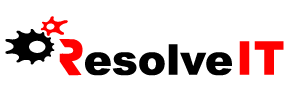
Modernising Healthcare
Healthcare organisations of all sizes need to keep up with growing consumer demand for a better patient experience while also dealing with sensitive patient information.
But healthcare organizations need solutions that can meet these demands while keeping patient data secure. Healthcare organizations deal with massive amounts of patient data, which can comprise hundreds of terabytes, and must also meet stringent regulatory requirements, such as HIPAA, which requires a data backup and disaster recovery contingency plan.
At the same time, data also need to be easily collectible from patients and accessible for analysis in order to not compromise the patient experience.
Key Benefits
- Keeping patient data secure -Ensuring patient data are safe from cyber attacks presents a major roadblock for healthcare organizations adopting cloud services. Cloud-service providers are required to enter into a HIPAA-compliant business associate contract or agreement (BAA) in order to store or process electronic protected health information (ePHI).
- Mobilizing the workforce -Cloud applications need to offer physicians and other medical staff secure remote access to pertinent information.
- Keeping IT infrastructure up to date -Because data storage needs are so great for healthcare organizations, upgrading infrastructure can be prohibitively expensive. These data also need to be quickly accessible, both on-site and remotely.
- Improving the patient experience -Healthcare organizations want to attract and retain patients by developing new services, such as telemedicine and delivering medical data via wearable technology, as well as improve patient outcomes.
- Insights on health data -Harnessing insights from a patient's health history can help improve quality of care and reduce costs.
Compliance
- Medical data need to be stored securely and in compliance with mandates such as HIPAA and HITECH. HIPAA requires a contingency plan that includes data backup and disaster recovery procedures.
Big data analysis tools
- Physicians and other medical staff need to be able to interpret large amounts of industry-wide data to thrive in the movement toward value-based healthcare.
Data collection and storage
- Data need to be easily collectable, securely stored, and scalable. The solution needs to be able to store massive amounts of data.
Mobility
- In order to improve patient outcomes, staff need to be able to access information in real-time, on any device, and at the point of care.
Communication
- Staff need to be able to share medical information quickly and securely to improve patient care. At the same time, they must ensure ePHI mandates are honored.
Document management
- Having an online solution to sign, save, manage, and integrate patient forms can save valuable time and effort for both patients and staff.
How we can help
Keep your sensitive data secure
- Cloud Service that enables medical organisation to afford the best in security solutions on apay-as-you-go-basis, protecting them from costly cyber attacks with features such as data encryption and access control
Enable disaster recovery
- Disaster recovery as a service provides the disaster recovery solutions necessary for health organisations to comply with HIPAA. HIPAA also requires to have an ePHI data backup plan in place.
Manage your data
- Cloud service can help medical organisation store and shift through hundreds of terabytes of medical information collected throughout the year. Data are stored securely but are readily available for analysis and diagnosis, and storage can be upgraded as needed.
Save money
- Cloud service can help medical organisation store and shift through hundreds of terabytes of medical information collected throughout the year. Data are stored securely but are readily available for analysis and diagnosis, and storage can be upgraded as needed.
Communicate better
- SaaS enables medical professionals to share information quickly and securely anywhere they can connect to the internet. Communication and collaboration can go uninterrupted, regardless of where medical staff may be located.
Improve efficiency and integration
- Instead of faxing charts between practices, cloud optimizes medical organisations' workflow by offering a single access point to patient information so that multiple doctors and staff can see lab results or notes on patients.
